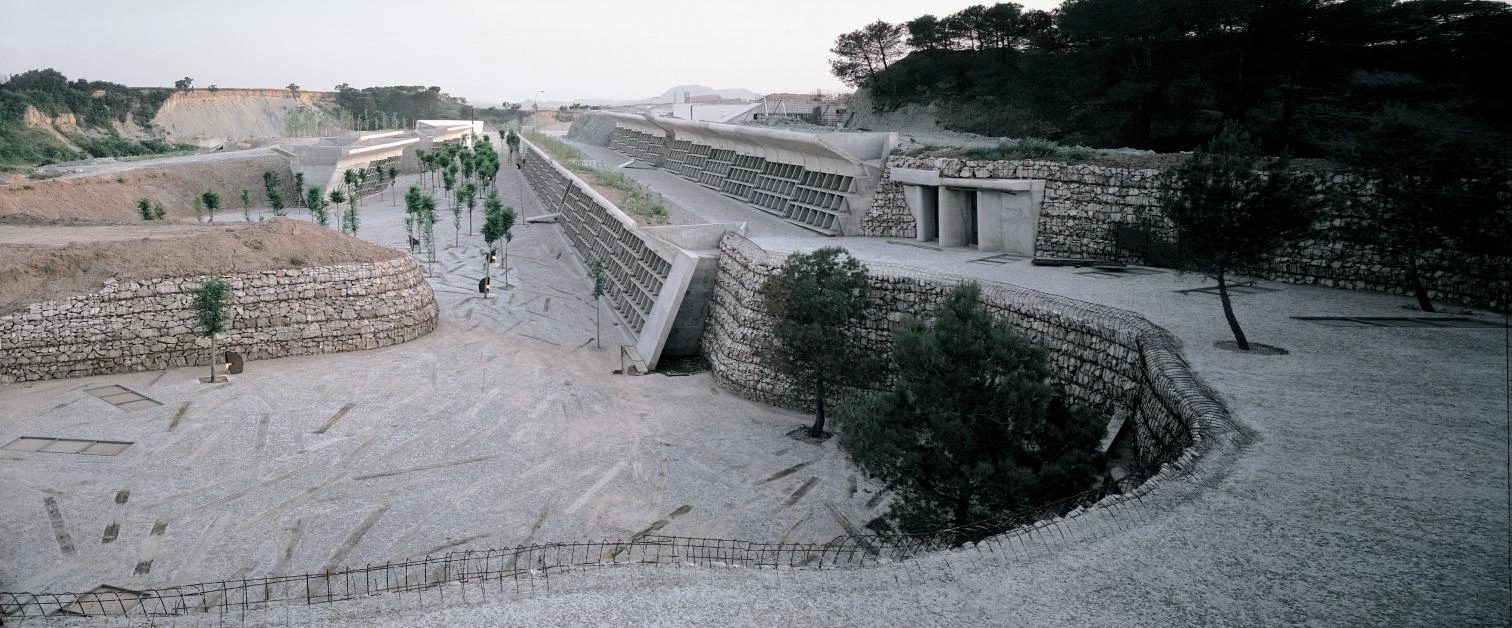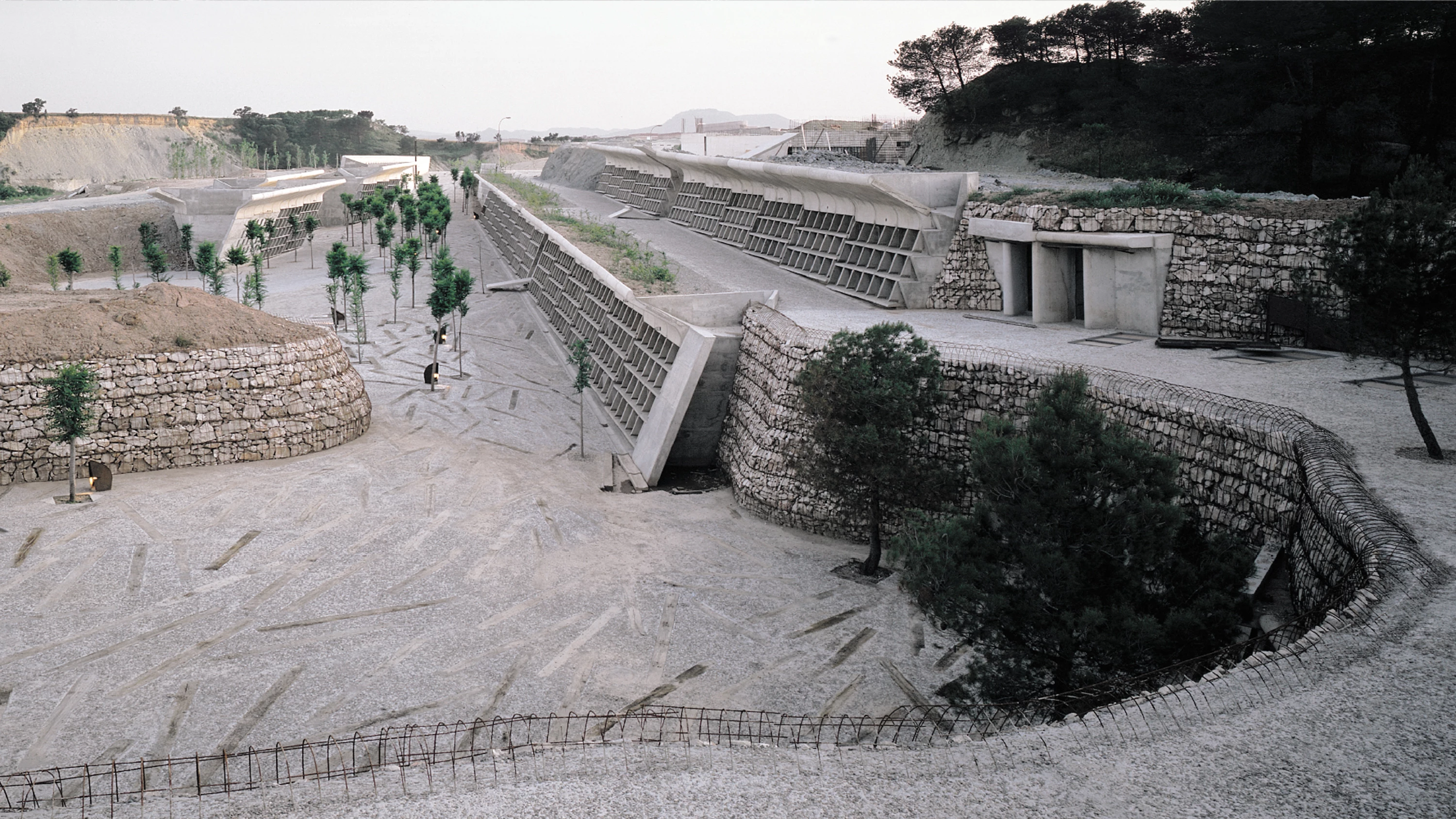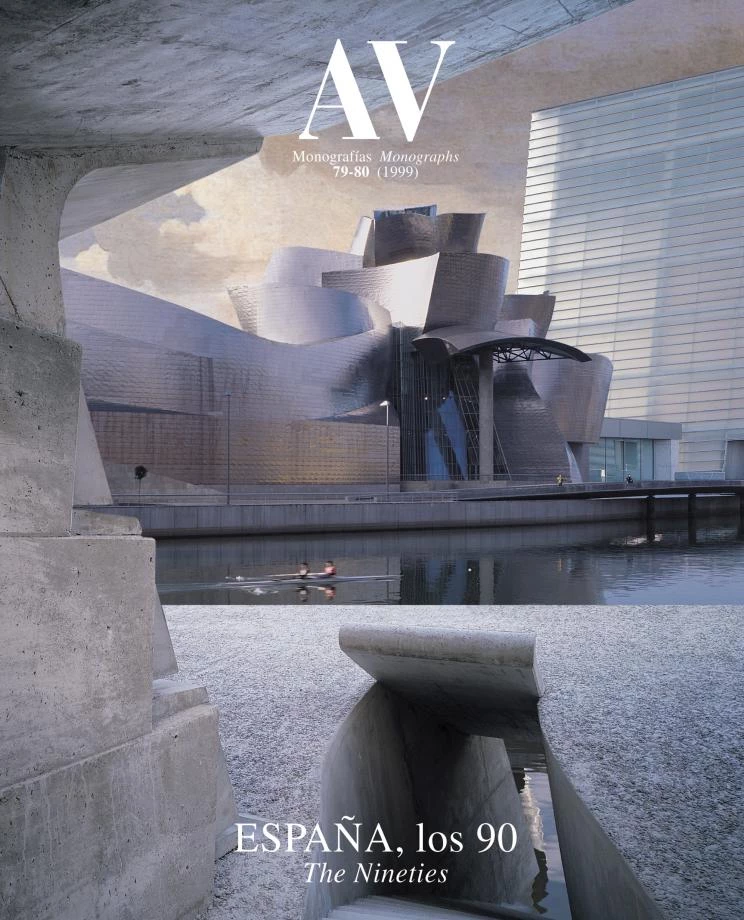Cemetery, Igualada
Enric Miralles Carme Pinós- Type Religious / Memorial Cemetery
- Material Concrete
- Date 1985 - 1996
- City Igualada (Barcelona)
- Country Spain
- Photograph Manel Armengol Hisao Suzuki
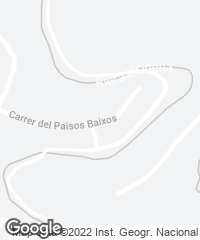
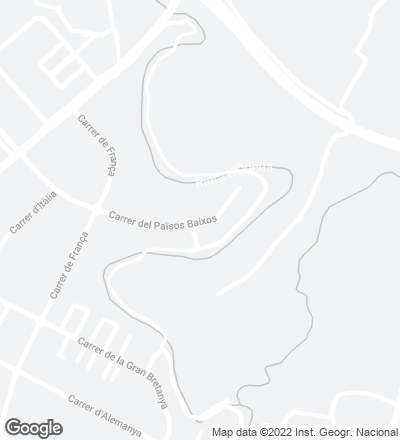
Going up the hillside one reaches the excavation which houses the cemetery. A cemetery in a pit, laid out as a quarry in the open. The wound on the ground preserves the feeling of a neglected quarry, whose slopes crumble with the passage of time under the Mediterranean sun. The concentric excavation of stands allows to rest the concrete niches against the terrain, and walk, as if through ruins, around its sunny terraces. The concentric itinerary of the cemetery of Igualada is condensed in a soft descent to a central courtyard open to the sky, a sloped plan with a continuous paving upon which large planks that seem to float down current emerge and head toward the haven of the central courtyard. This river of souls produces an extraordinarily poetic image, especially when it staunches like a pond. It reminisces the rivers that flow in the desert and are silently devoured by the sand. Upon the slope, the niches adopt an oblique position; sometimes as retaining walls, sometimes as the strained banks of the river of souls. And the pantheons take the shape of the desert hypogea, an unusual image beside the hydraulic gabions. One of them keeps the remains of the architect.
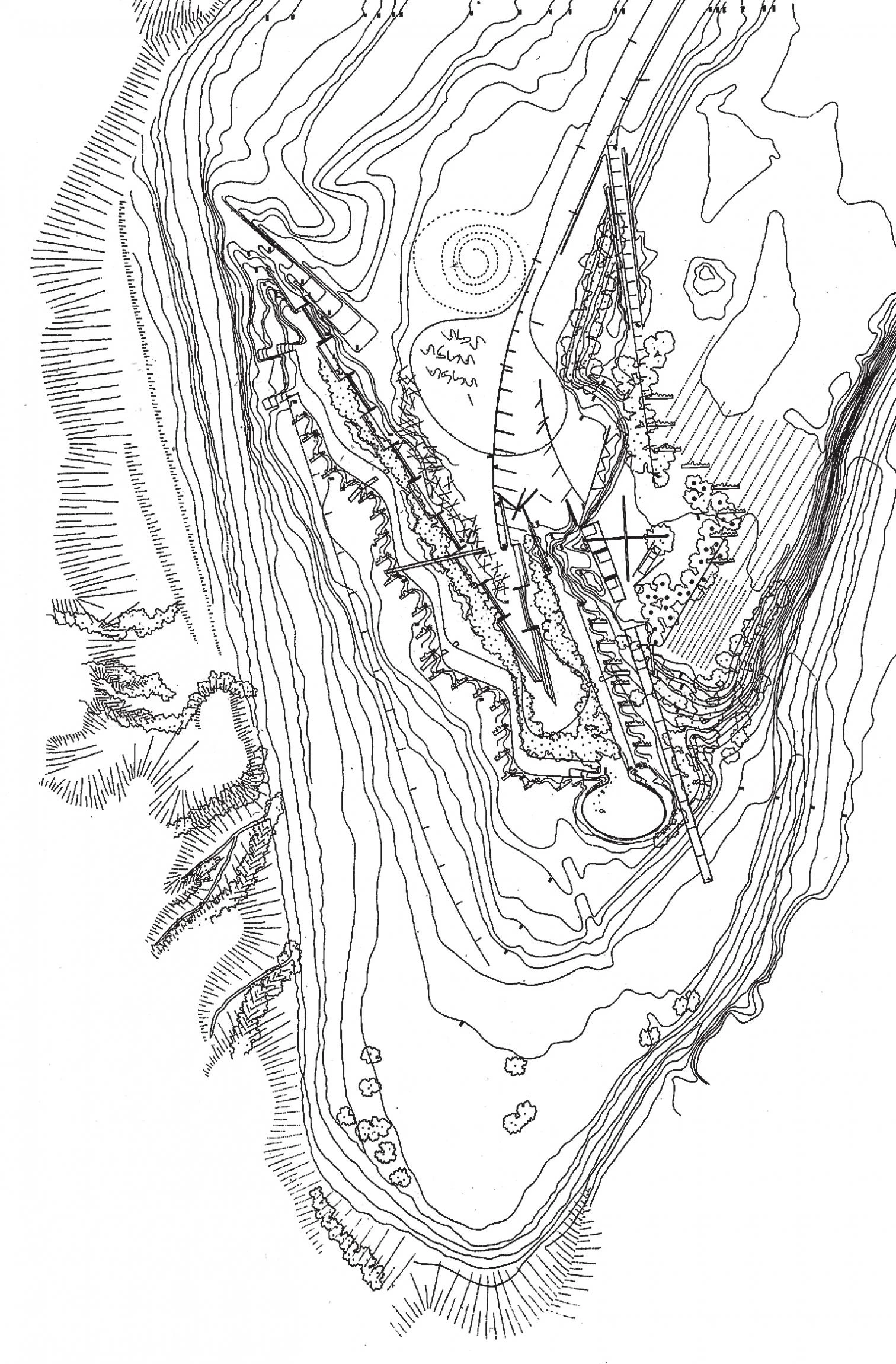
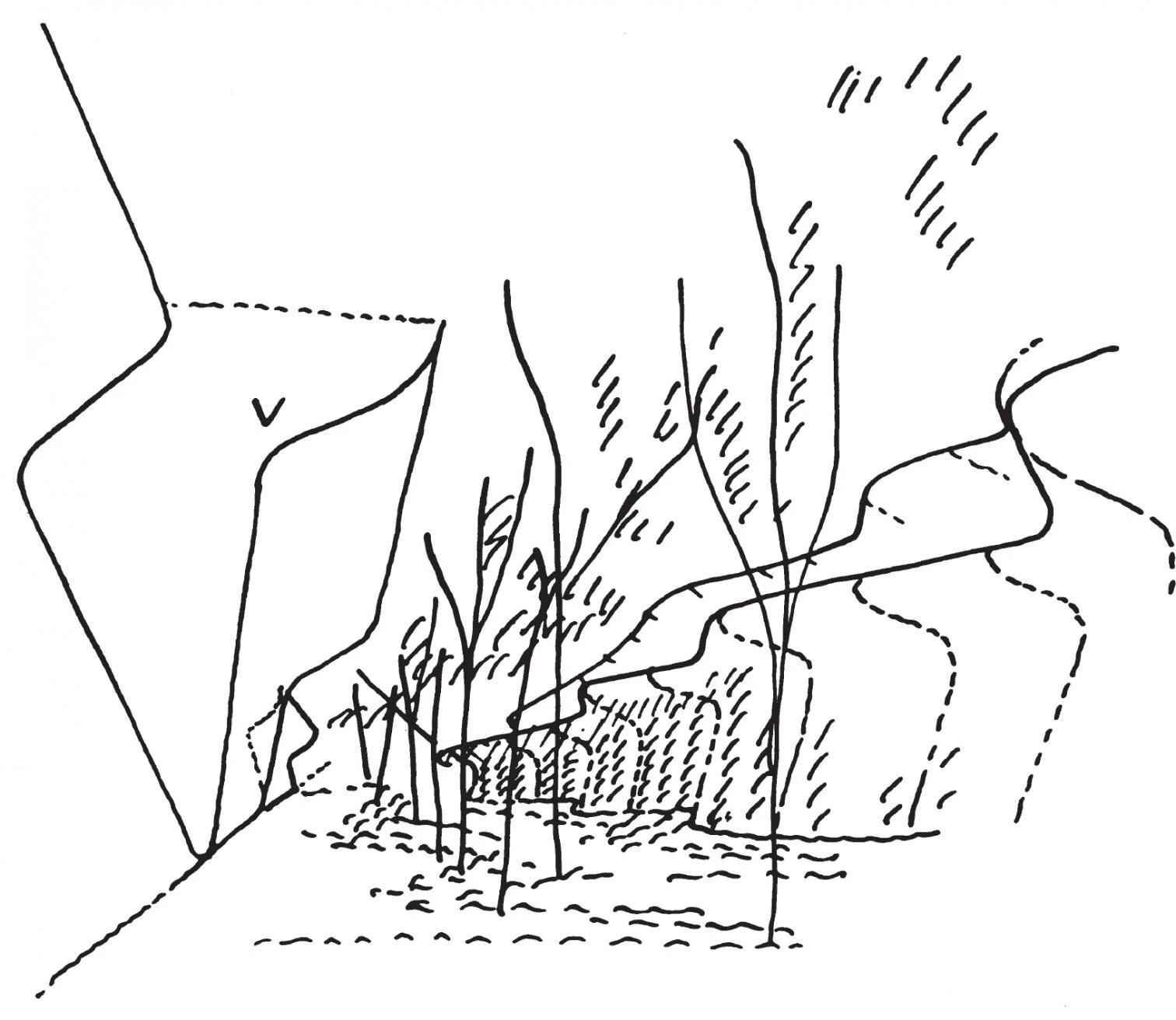
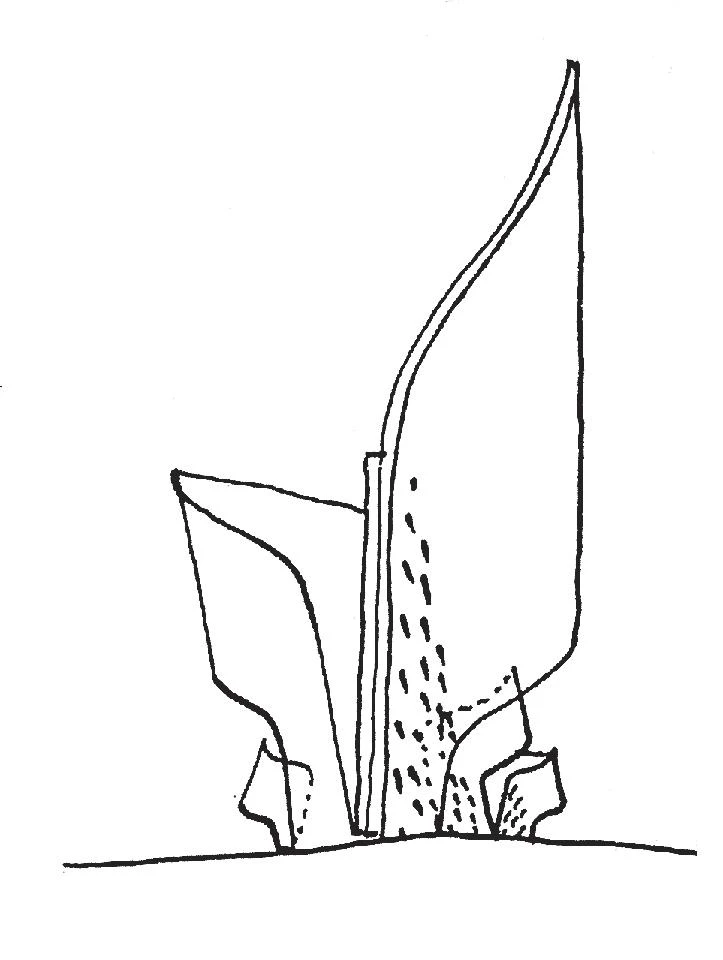

The whole project of the cemetery moves – without following neither the vertical nor the horizontal axis – as in the paintings of the Final Judgment, where the grave tombs and the still gravestones crack and toss on the day of wrath: mors stupebit et natura. Before the amazement of Death and of Nature, before the amazement of our eyes and our memory, the courtyard and the galleries of niches are laid out upon the wound open on the terrain, among the frightened pine trees. But here, only the wind sweeps through the open and dislocated slabs of the terrain. In the cemetery of Igualada, the intense feeling which inhabits the place of death forms an alliance with the need for form, with the expressive construction by Miralles and Pinós, in such a way that their usually carefree metaphors gain solemnity in this case. The remembrance of pain, perhaps the most intense of human experiences, is found in the studied dislocation of the ossuaries, whose presence abandons conventional anonymity and displays a surprising movement. It is not a movement of exaltation as that common to the Baroque, which suggests the resurrection towards the sky, nor of the pathetic gestures of the nineteenth century pantheons, but rather of the studied movement of the author’s permanent irony, of a postmodernity of uncertainties concerning shape and meaning, and of the complicated but apparently simple and inevitable aesthetic of his work.
